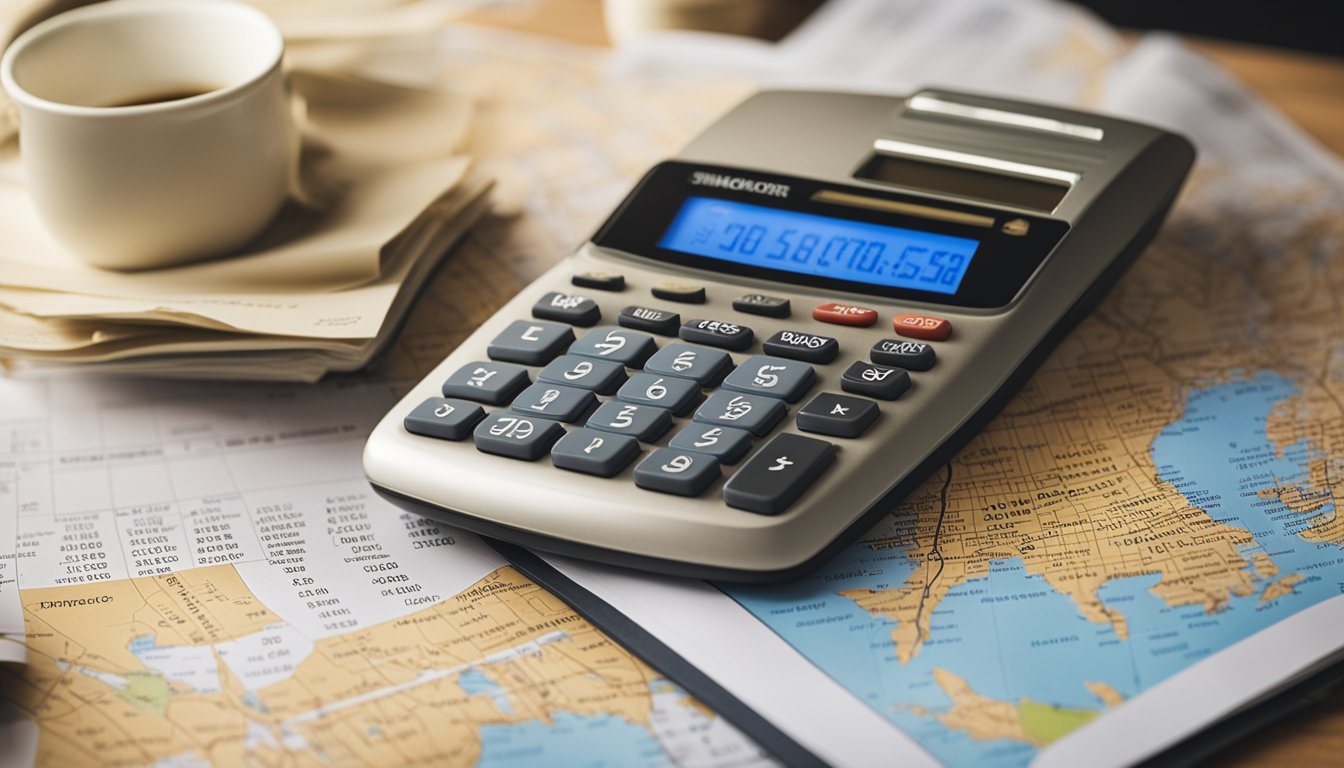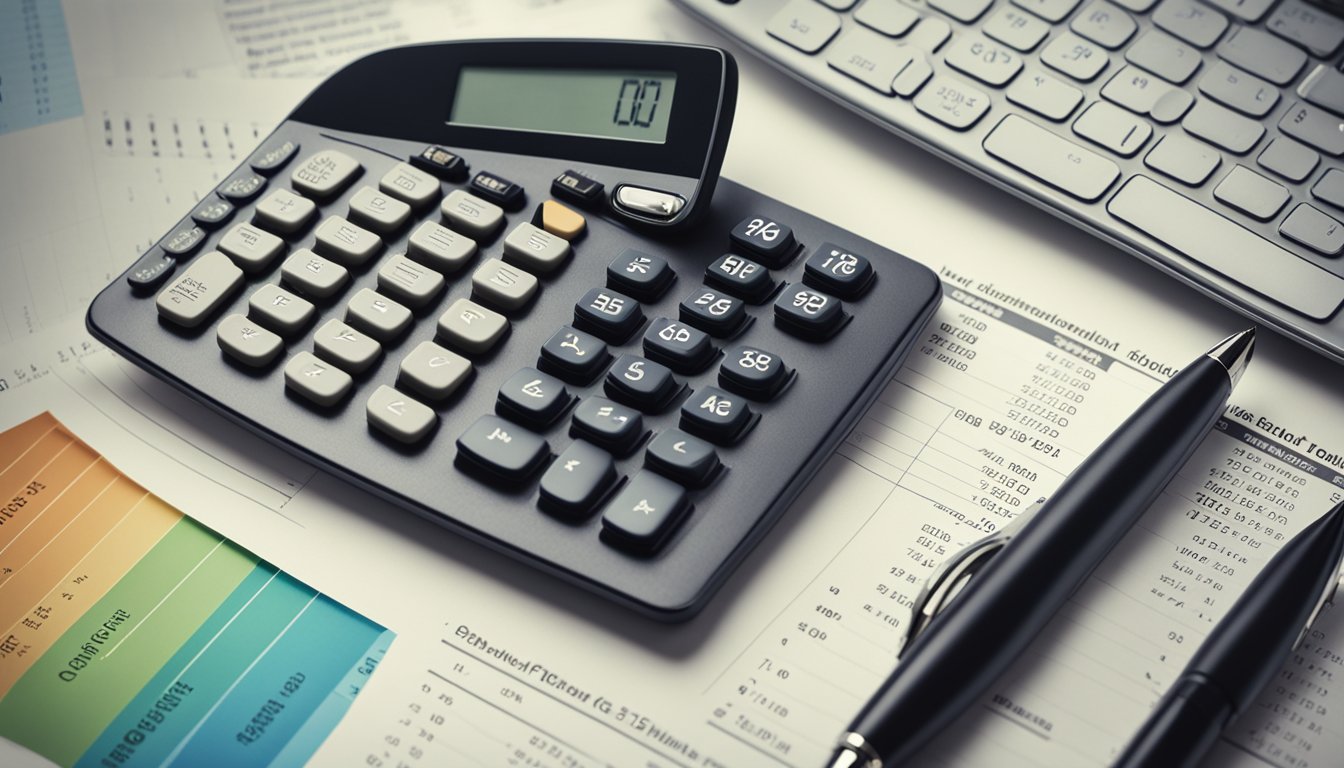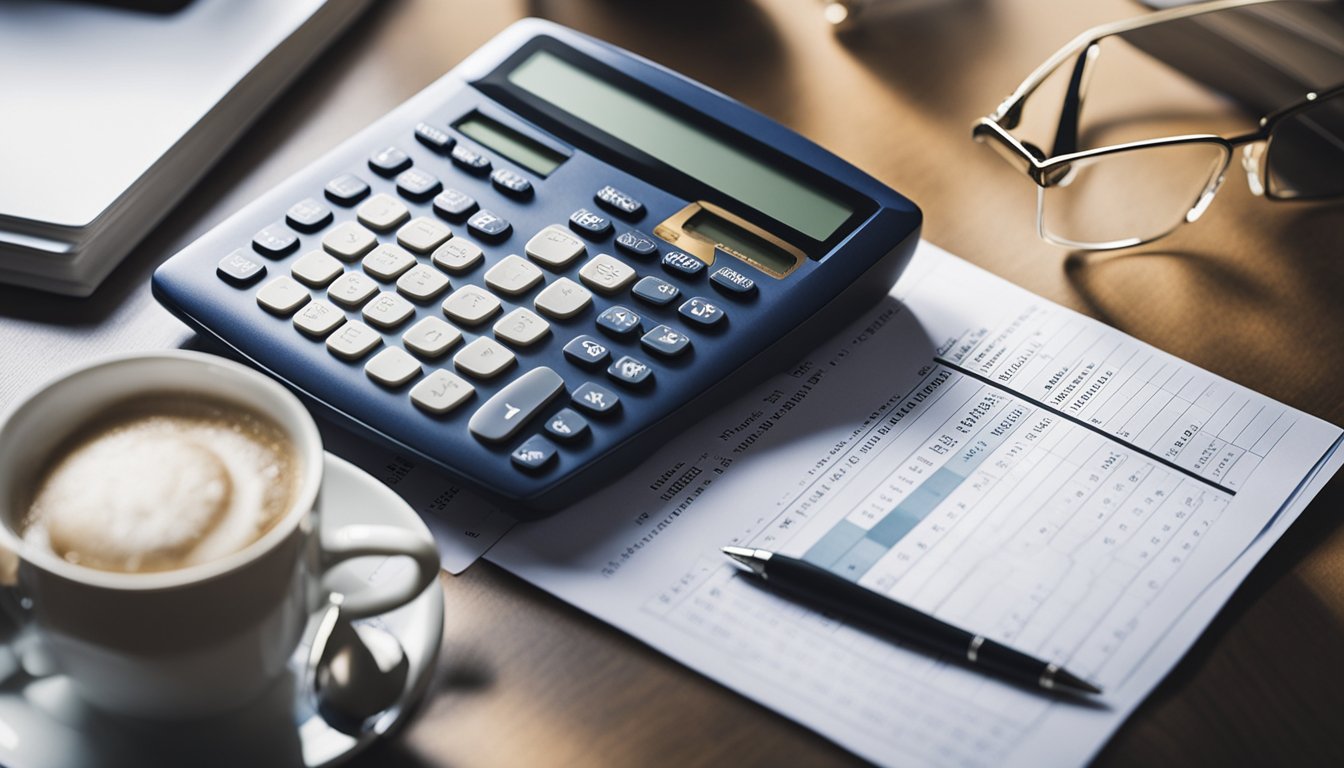Retirement planning is an essential part of financial planning, and it is never too early or too late to start planning for your retirement. To ensure a comfortable retirement, you need to estimate your annual retirement expenses accurately. This is especially important in Singapore, where the cost of living is high, and healthcare expenses can be significant.

Understanding retirement in Singapore is crucial before estimating your retirement expenses. In Singapore, the Central Provident Fund (CPF) is a mandatory savings scheme that helps Singaporeans save for retirement. The CPF provides retirement, healthcare, and housing benefits. Knowing how CPF works and how much you can expect to receive from it can help you estimate your retirement expenses accurately. Other factors that can affect your retirement expenses include your desired retirement lifestyle, healthcare costs, and inflation.
Key Takeaways
- Understanding retirement in Singapore is crucial before estimating your retirement expenses.
- Estimating your retirement expenses involves considering your income streams, savings, lifestyle, and goals.
- Using online tools and calculators can help you estimate your retirement expenses accurately.
Understanding Retirement in Singapore

Retirement is a significant milestone in your life. It is a time when you can finally relax and enjoy the fruits of your labor. In Singapore, retirement is defined as ceasing work and receiving retirement income. Retirement lifestyle and age are two crucial factors that determine the amount of money you need to save for your retirement.
Defining Retirement Lifestyle and Age
Your retirement lifestyle is the kind of life you want to lead after you retire. It includes your daily expenses, such as food, transportation, and housing, as well as your leisure activities, such as travel and entertainment. Your retirement age is the age at which you plan to retire. In Singapore, the retirement age is currently 62 years old. However, the government has announced plans to raise it to 65 years old by 2030.
To estimate your retirement expenses accurately, you need to consider your desired retirement lifestyle and age, as well as the inflation rate. Costs will inevitably increase over time, so it is essential to factor in inflation when planning for your retirement.
Re-Employment and CPF Fundamentals
In Singapore, you have the option to continue working after you retire. The government has introduced the Re-employment Act, which mandates that employers must offer re-employment to eligible employees up to the age of 67. This means that you can continue to work and earn an income even after you retire.
The Central Provident Fund (CPF) is a mandatory savings scheme in Singapore that aims to help Singaporeans save for their retirement, healthcare, and housing needs. You and your employer contribute a percentage of your monthly salary to your CPF account, which earns interest. You can withdraw your CPF savings when you reach the age of 55, or you can choose to leave it in your account to earn more interest.
In conclusion, understanding retirement in Singapore is crucial to planning for your retirement. You need to consider your desired retirement lifestyle and age, as well as the inflation rate and the CPF savings scheme. By doing so, you can estimate your annual retirement expenses accurately and ensure that you have enough money to enjoy your retirement years.
Estimating Retirement Expenses

Retirement planning can be a daunting task, but it’s essential to ensure that you’re financially prepared for your golden years. One of the most critical aspects of retirement planning is estimating your annual retirement expenses. Here’s how you can do it.
Identifying Fixed and Variable Expenses
The first step in estimating your retirement expenses is to identify your fixed and variable expenses. Fixed expenses are those that remain relatively constant, such as housing costs, insurance premiums, and property taxes. Variable expenses, on the other hand, are those that fluctuate from month to month, such as groceries, entertainment, and travel.
To estimate your fixed expenses, you can use your current monthly expenses as a starting point and adjust them for inflation. For variable expenses, you may need to estimate based on your current spending habits and adjust for inflation and changes in lifestyle.
The Impact of Inflation on Expenses
Inflation is an essential factor to consider when estimating your retirement expenses. As prices for goods and services increase over time, the purchasing power of your retirement savings will decrease. To account for inflation, you should assume a conservative inflation rate of around 2% to 3% per year when estimating your retirement expenses.
Healthcare Considerations
Healthcare expenses are another critical factor to consider when estimating your retirement expenses. As you age, your healthcare costs are likely to increase, and you may need to budget for long-term care expenses. You can estimate your healthcare expenses by reviewing your current healthcare costs and factoring in potential increases due to age-related health issues.
In conclusion, estimating your retirement expenses is a crucial step in retirement planning. By identifying your fixed and variable expenses, accounting for inflation, and factoring in healthcare costs, you can develop a realistic retirement budget that will help you enjoy your golden years without financial worries.
Income Streams and Savings

Planning for retirement can be overwhelming, but it doesn’t have to be. Estimating your annual retirement expenses is a crucial step in ensuring that you have enough money to live comfortably during your golden years. In this section, we will explore some of the income streams and savings options available to you in Singapore.
CPF Savings and Retirement Account
The Central Provident Fund (CPF) is a mandatory savings scheme in Singapore that helps individuals save for their retirement, healthcare, and housing needs. As an employee, you and your employer contribute a percentage of your monthly salary to your CPF account. The money in your CPF account earns interest, which compounds over time. When you reach the age of 55, you can withdraw a portion of your CPF savings, and the rest will be transferred to your Retirement Account (RA).
Your RA is designed to provide you with a monthly payout during your retirement years. The amount of monthly payout you receive depends on the sum of money you have in your RA, your age, and the prevailing interest rates. You can estimate your monthly payout using the CPF Retirement Estimator here.
Investments and Annuities
Investing in stocks, bonds, and mutual funds can be an excellent way to grow your retirement savings. The key is to invest in a diversified portfolio that balances risk and reward. You can also consider purchasing an annuity, which is a financial product that provides you with a guaranteed income stream for life or a specific period.
When choosing an annuity, it’s essential to consider factors such as the payout rate, fees, and the financial strength of the insurance company. You can learn more about annuities and how they work in Singapore here.
Monthly Payouts and Compounding Interest
One of the benefits of saving for retirement is the power of compounding interest. Compounding interest is when the interest earned on your savings is reinvested, allowing your money to grow faster over time. By starting to save early and consistently, you can take advantage of the power of compounding interest.
When planning for retirement, it’s essential to consider the monthly payouts you will receive from your income streams, such as CPF savings, annuities, and investments. You can use online calculators to estimate your monthly payouts based on different scenarios, such as different interest rates and investment returns.
In conclusion, estimating your annual retirement expenses can be a daunting task, but it’s essential to ensure that you have enough money to live comfortably during your golden years. By considering income streams such as CPF savings and retirement accounts, investments and annuities, and the power of compounding interest, you can take steps towards achieving your retirement goals.
Lifestyle and Goals

Retirement is a new phase of life, and it is important to set goals for your retirement lifestyle. You may want to travel, spend time with family, or pursue hobbies and activities that you never had time for before. Whatever your goals may be, it is important to plan for them and estimate the cost associated with them.
Setting Retirement Goals
To estimate your annual retirement expenses, you need to have a clear idea of your retirement lifestyle. This includes your housing, food, transportation, healthcare, and other expenses. You should also consider the cost of your hobbies and activities. For example, if you plan to travel extensively, you need to factor in the cost of transportation, lodging, food, and activities.
One way to set retirement goals is to make a list of the things you want to do during retirement. You can then estimate the cost of each item on your list and add them up to get a total. This will give you an idea of how much you need to save to achieve your retirement goals.
Planning for Hobbies and Activities
Retirement is a great time to pursue hobbies and activities that you enjoy. Whether it’s golfing, painting, or playing an instrument, you should factor in the cost of your hobbies and activities when estimating your annual retirement expenses.
One way to plan for your hobbies and activities is to make a list of the things you want to do and estimate the cost of each item. You can then prioritize your list based on your budget and the things that are most important to you.
Another way to plan for your hobbies and activities is to join a club or group that shares your interests. This can be a great way to meet new people and participate in activities that you enjoy without breaking the bank.
In conclusion, setting retirement goals and planning for your hobbies and activities are important steps in estimating your annual retirement expenses. By taking the time to plan, you can ensure that you have the resources you need to enjoy your retirement to the fullest.
Tools and Calculators

Estimating your annual retirement expenses can be a daunting task, but fortunately, there are several tools and calculators available to help you. In this section, we will discuss two popular tools that can assist you in estimating your retirement expenses.
Using Retirement Calculators
Retirement calculators are an excellent tool to help you determine how much money you will need to save for retirement. These calculators take into account factors such as your current age, expected retirement age, life expectancy, and current savings. They then use this information to estimate how much money you will need to save each year to meet your retirement goals.
One popular retirement calculator is the Retirement Planning Calculator offered by Standard Chartered Bank. This calculator takes into account several factors, including your current savings, expected retirement age, and desired annual retirement income, to provide you with an estimate of how much money you will need to save each year to meet your retirement goals.
Projecting Life Expectancy
Another important factor to consider when estimating your retirement expenses is your life expectancy. While it is impossible to predict exactly how long you will live, there are several tools available that can help you estimate your life expectancy based on factors such as your age, gender, and lifestyle.
One such tool is the Life Expectancy Calculator offered by Living to 100. This calculator takes into account several factors, including your age, gender, and lifestyle habits, to provide you with an estimate of your life expectancy. This information can be useful when estimating your retirement expenses, as it can help you determine how long your retirement savings will need to last.
In conclusion, using retirement calculators and projecting life expectancy can be helpful tools when estimating your annual retirement expenses. By taking advantage of these resources, you can better prepare yourself for retirement and ensure that you have enough money saved to live comfortably in your golden years.
Legal and Policy Considerations

When planning for your retirement, it is important to consider the legal and policy implications that may affect your CPF funds and personal data. Here are some things you should keep in mind:
Understanding CPF Terms of Use
Your CPF funds are subject to the Terms of Use set by the Central Provident Fund Board (CPF Board). It is important to understand these terms to ensure that you are using your funds in accordance with the rules and regulations. Some of the key terms to be aware of include the minimum sum scheme, the CPF LIFE scheme, and the various withdrawal policies.
Privacy Policy and Personal Data
The CPF Board collects and manages your personal data in accordance with its Privacy Policy. This policy outlines how your data is collected, used, and protected. It is important to understand your rights and obligations under this policy to ensure that your personal data is secure and protected.
In addition to the CPF Board’s Privacy Policy, you should also be aware of other policies and regulations that may affect your personal data. For example, the Personal Data Protection Act (PDPA) sets out guidelines for the collection, use, and disclosure of personal data by organizations in Singapore.
Overall, it is important to be aware of the legal and policy considerations that may affect your retirement planning. By understanding the CPF Board’s Terms of Use and Privacy Policy, as well as other relevant policies and regulations, you can ensure that your retirement funds and personal data are protected and used in accordance with the rules and regulations.
Final Thoughts on Retirement Planning

Congratulations! You have taken the first step towards a secure and comfortable retirement by estimating your annual retirement expenses. Remember, retirement planning is an ongoing process, and it’s important to periodically review and adjust your plan as needed.
As you save for retirement, keep in mind that your retirement sum or nest egg should be large enough to cover your estimated annual expenses. Use tools such as retirement calculators to help you determine how much you need to save and adjust your plan accordingly.
It’s also essential to consider factors such as inflation, unexpected expenses, and changes in your lifestyle. Building an emergency fund and having adequate insurance coverage can help you prepare for unexpected expenses.
As you plan for retirement, keep in mind that there are different methods to estimate your annual expenses. Choose a method that works best for you and adjust it as needed. The important thing is to have a plan in place and take action towards achieving your retirement goals.
Remember, retirement planning is not just about saving money, but it’s also about enjoying your retirement years to the fullest. Consider your hobbies, interests, and travel plans when estimating your annual expenses. Retirement is a time to pursue your passions and enjoy the fruits of your labour.
In summary, retirement planning is a crucial aspect of your financial well-being. By estimating your annual retirement expenses, you can create a plan that works for you and ensures a secure and comfortable retirement. So start planning today and enjoy a worry-free retirement!
Frequently Asked Questions

Could £600,000 sustain a comfortable retirement lifestyle in Singapore?
It depends on your lifestyle choices and retirement goals. According to DBS Retirement Calculator, the amount you’ll need for retirement is based on your lifestyle selections. You can work out your desired retirement lifestyle and projected savings to see if it’s enough to meet your required basic spend, plus anything else on top for all your retirement years.
What’s the magic number? Is £1 million sufficient for a worry-free retirement in Singapore?
Again, this depends on your desired retirement lifestyle and goals. As per DollarsAndSense, factors to consider include how long you intend to work and your monthly expenditure. You can work out your retirement needs based on your current income and desired retirement age. Say you want to replace 75% of your current income and your desired retirement age is 62, you can calculate the annual retirement income needed and the years in retirement to get an estimate of the funds required.
What monthly income would one need for a dream retirement in Singapore?
The monthly income required for a dream retirement in Singapore depends on your desired lifestyle and retirement goals. You can use a retirement calculator like SmartWealth to work out your desired retirement income based on your current income, age, and desired retirement age.
At what age could one retire in Singapore with a nest egg of £5 million?
The age at which one can retire in Singapore with a nest egg of £5 million depends on your desired retirement lifestyle and goals. You can use a retirement calculator like MoneySense to work out your desired retirement income based on your current income, age, and desired retirement age.
How can I calculate the funds required for a snug retirement in Singapore?
You can calculate the funds required for a snug retirement in Singapore by considering your desired retirement lifestyle and goals. You can use a retirement calculator like DBS Retirement Calculator to work out your desired retirement lifestyle and projected savings to see if it’s enough to meet your required basic spend, plus anything else on top for all your retirement years.
Could you explain the 4% rule and how it applies to retirement spending in Singapore?
The 4% rule is a rule of thumb used to determine how much retirees can safely withdraw from their retirement funds each year without depleting their savings. According to the rule, you can withdraw 4% of your retirement savings in the first year of retirement and adjust this amount for inflation in subsequent years. However, the 4% rule may not be suitable for everyone and should be used with caution. You can consult a financial advisor for more information on retirement spending in Singapore.

